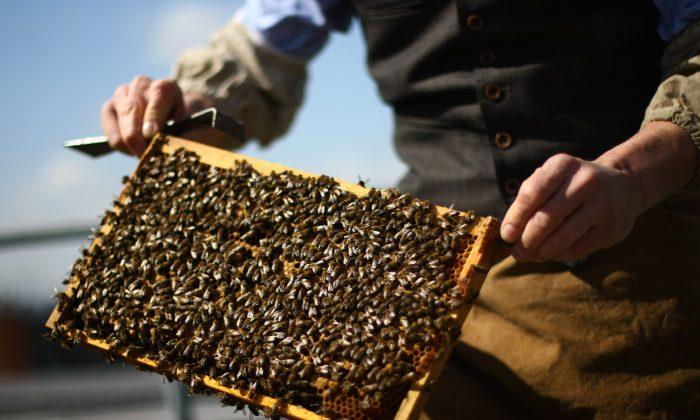The future of Canada’s honey production is continuing to be examined by the Senate’s agricultural committee following massive bee deaths in Ontario and Quebec thought to be tied to the use of the pesticide neonicotinoid.
“The acute incidences of honeybee mortality in Quebec and Ontario continues to concern scientists, beekeepers, farmers, and regulatory bodies alike,” Mark Wales, a board member of the Canadian Federation of Agriculture, told senators.
“But it is important to remember that the continued issue of honeybee health, and pollinator health in general, is an issue from coast to coast, since so much of agriculture is dependent on bees and pollinators.”
In 2012, a massive die-off of bee colonies in Quebec and Ontario was blamed on neonicotinoid after testing by the Pest Management Regulatory Agency (PMRA) revealed 70 percent of dead bee samples showed the insecticide. The majority of the deaths were blamed on dust generated from the planting of corn in southwestern Ontario.
PMRA has since placed requirements for seed package labels that include warnings on the potential dangers to bees. It has also increased the requirements for farmers who use the treated seeds during the spring planting season. However, the agency stopped short of a ban on the pesticide, and will not release a final report until 2018.
This differs from Europe, which last April imposed a ban on three common neonicotinoid pesticides following several scientific studies linking them to harm in bees and other wildlife.
Ontario has 3,150 beekeepers of the 8,483 estimated across Canada, although its honey production is significantly lower compared to the Prairies.
Honey production across the country was depressed amid the sudden losses. The Ontario Beekeepers Association had earlier recorded a 32.6 percent drop in honey production in 2013.
The solution for Ontario beekeepers is to scale back the use of neonicotinoid, according to Dan Davidson, president of the Ontario Beekeeper’s Association.
“The usage has to go down. That is all that is needed. It is a pretty simple solution,” said Davidson in an interview.
“It’s not only honeybees. Honeybees are a good indicator of what is going on in the environment. There have been stories of the monarch butterfly and they also see a pretty strong connection there.”
Senators heard testimony from the Manitoba Beekeeper’s Association and Saskatchewan Beekeepers Association that beekeepers are also contending with the growing problem of infestations by various mites and even beetles.
“The primary culprit affecting beekeepers is the varroa mite. This mite is a continuous problem that we have difficulty dealing with. Varroa have developed resistance to two of the best three control options we have of synthetic mite-control products,” said Jack Berg, president of the Saskatchewan Beekeepers Association.
Kaven Baker-Voakes is a freelance reporter based in Ottawa.





Friends Read Free